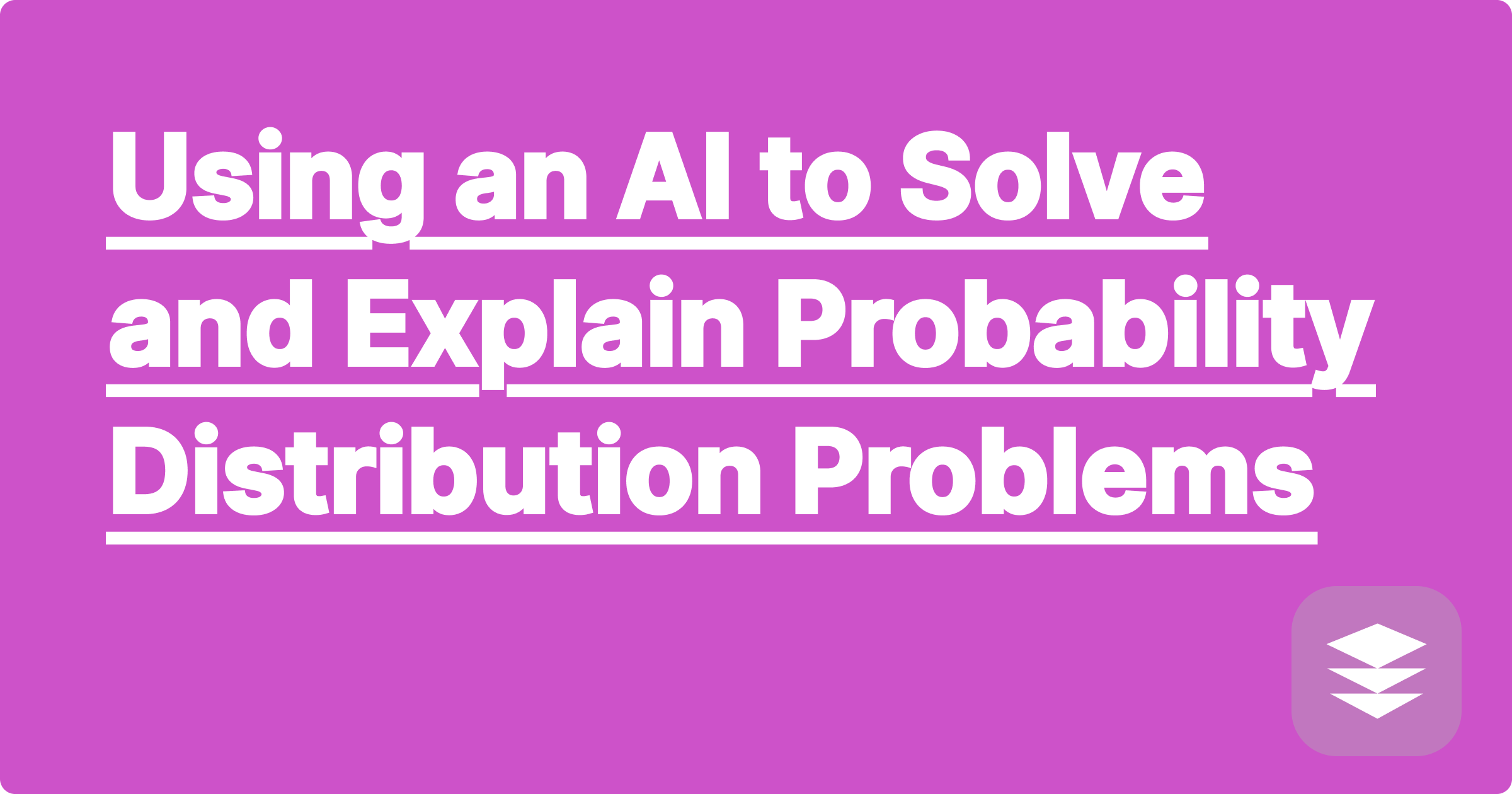
Probability and statistics are essential tools for any STEM professional. A core part of the subject is understanding and applying different probability distributions. From the discrete clicks of a Geiger counter (Poisson) to the bell curve of exam scores (Normal), each distribution is a mathematical model for a different type of random process. The challenge for students is twofold: knowing which distribution to use for a given word problem, and correctly applying its formula.
A powerful AI assistant like GPAI Solver acts as an intelligent probability problem solver. It doesn't just calculate; it helps with identification and explains the process.
Example Workflow:
[Image: A screenshot of the GPAI Solver interface showing the solution to a binomial distribution problem, with the distribution type, parameters, and formula clearly labeled and explained. Alt-text: An AI probability distribution calculator solving a homework problem.]
Beyond just solving, you can ask the AI to help you understand the distribution itself.
This is where a multi-tool approach shines. As you use the solver to work through problems for each distribution, use the GPAI Cheatsheet tool to act as your note taker. Create a master cheatsheet that includes:
A: Yes. You can ask it to solve problems like, "For a normal distribution with a mean of 100 and a standard deviation of 15, find the probability that a value is between 85 and 115." The AI will show you how to calculate the z-scores and use a standard normal table (or its internal equivalent) to find the area under the curve.
A: By using the AI to solve dozens of practice problems, you train your own internal "identification engine." You start to recognize the patterns and keywords in word problems that signal which distribution to use. You're using the AI to build your own expertise.
Probability distributions are the language we use to describe and predict random events. By using an AI assistant to handle the complex calculations and provide clear, step-by-step explanations, you can master this language faster and more effectively than ever before.
[Solve your toughest probability distribution problems today. Try the GPAI Solver for step-by-step help. Sign up for 100 free credits.]
A Step-by-Step Guide to Your First MATLAB/Simulink Project with AI
How to Design and Analyze a Simple RLC Circuit with an AI Assistant
The Ultimate Cheatsheet for Your Thermodynamics Final Exam
From Free-Body Diagram to Solution: Solving Statics Problems with AI
How to Ace Your Signals and Systems Class with an AI Fourier Analyzer
Your Personal Assistant for Fluid Mechanics Homework
How to Create an Algorithm Analysis (Big O) Cheatsheet with AI
A Guide to Writing and Verifying Mathematical Proofs with AI
How to Build a Complete Study Guide for Your Operating Systems Course
Using an AI to Solve and Explain Probability Distribution Problems